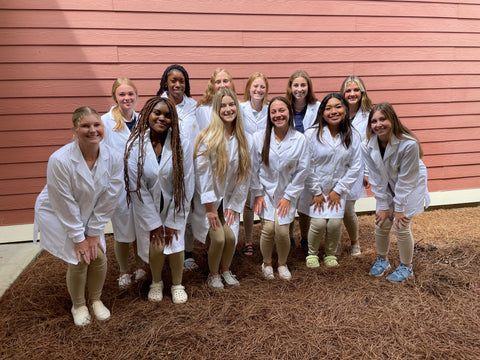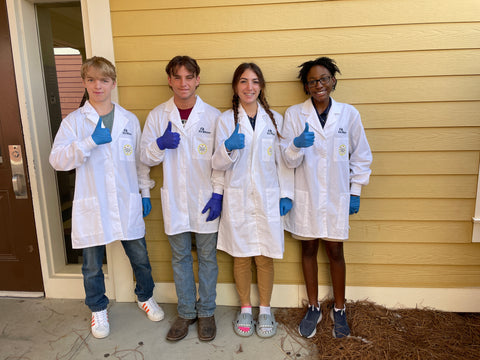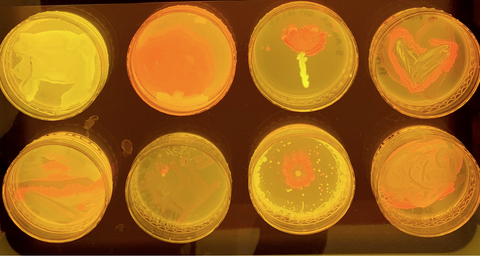
Making Science Education Fun for a Wide Range of students - A Tale of two teachers
Making Science Education Fun for a Wide Range of students - A Tale of two teachers
Teaching biology in middle school and high school can have its challenges, especially in a class of students with different interests. Some students are enthusiastic about learning; some are just looking to pass. However, creating an engaging and enjoyable learning experience is possible for both types of students. In this article, we will explore some strategies and tips on how to make teaching “dry” concepts like bacteria, genetics, DNA sequencing, and bioethics fun for all students. We interviewed two teachers, one in America and one in Canada, for their experience.
Miss Courtney is a Forensic Science teacher and a Career, Technical and Agricultural Education (CTAE) Director & Science Teacher in GA, USA. She teaches an elective course in synthetic biology and biotechnology for grade 12 students; the course lasts a whole academic year. Many students of hers have moved on to pursue health sciences, nursing, etc. in college and contacted her to explain how useful her course was in their current academic journey. While many of her students chose the elective because of their pre-existing biology interests, some students did develop more interests and started taking the course more seriously to learn transferable scientific knowledge & skills.
When she first approached Amino Labs, her biotechnology knowledge was at a beginner’s stage. After three years, lesson planning has become so straightforward that it’s almost like second nature for her.
“I was new to biotechnology, and I needed a resource and labs that not only my students could do but that I could do with limited prior knowledge and skills in the biotechnology world. I teach an elective on biotechnology. Julie and Justin helped me set up a classroom lab through the professional development sessions.” - Miss C tells us.
She has been using these kits for four years and has taken her students from the basics to advanced techniques, thanks to the help of custom activities designed by Amino Labs. Miss C. notes that the Zero to Genetic Engineering Hero™ Book is especially popular with the students because the language is easy to understand, user-friendly, and geared toward their level. She has been using the book as a curriculum guide for the whole course, but students still think it “does not look like a textbook” at all.

Miss Courtney developed her lesson plan based on the seven chapters of our book. In the first semester, students focus on learning the contents, from the whats and hows of DNA, biosafety and bioethics, E. coli and other bacteria strands, to genetic engineering and beyond. Amino Lab’s lesson guides and teacher resources are also used. In the following semester, the hands-on activities are implemented every week in the classroom. Students get to practice techniques such as pipetting, plate pouring, gel electrophoresis, and PCR while learning about biosafety and bioethics and having a glimpse into biomanufacturing. The use of virtual simulators has been proven to be helpful as well.
“I use the book with each chapter in sequence, and I have used all the labs at one time or another. I also have the students use the virtual simulators. They are perfect to introduce the students to what they will be doing in the labs.”
While the students who wanted to pursue careers in biotechnology loved every part of the class, Miss C observed that the other students appreciated the cool scientific experiments, too. The bioplastic kits activities are class favourites before Christmas. “It was a long lab, actually. But when we did it last year, everyone enjoyed making bioplastic ornaments a lot. Different shapes were created, from balls to stars.”
Other science activities that are engaging for the whole class are extracting DNA and controlling genetic expressions. “The DNA extraction activity is very new, very fun. The induce-it kit and heat-it kit (Chapter 7) usually take longer than one class period (up to three), but the color change is always exciting. Students enjoy the hands-on activities a lot, even when they don’t always know what they are doing”. - Miss C.
“The manuals and protocols are well written, making it easy to use them in the classroom. The students have absolutely enjoyed every lab.” - Miss C.

Miss S., on the other hand, is a private school teacher in Alberta, Canada. She has been using Amino Labs' products for three years. She teaches an elective course on Intro to Synthetic Biology to junior high and high school students. The course is a semester-long and meets once a week. She also runs a science club, the SynBio Club, for students from grades 8 to 12.
In the past few years, she and her students have joined multiple scientific conferences (most of them are for academics, not student-heavy), science fairs, and competitions. Last year alone, her teams won several local presentation and poster awards, along with a published journal article.
Miss S used Amino Lab’s Zero to Genetic Engineering Hero™ Book for lesson planning, in-class activities, quizzes, and club activities, too! The kits work for high school students, but she recommends them for more advanced junior high students as well. In Chapter 1, the book talks about what DNA is and suggests simple experiments to extract them.
“The elective course I am teaching helps students get accredited in synthetic biology and genetic engineering. This chapter’s content fits into Alberta’s Bio 20 & Bio 30 curriculum, and also the curriculum of grades 8 & 9. The content most aligned with the province’s curriculum is DNA and prokaryotic cell introduction. The lesson guides are a big help, definitely.”
The students also got to do DNA extraction from Amino Labs’ kit in class. Miss S says that not only do students like the hands-on experience, but they also develop a high understanding of the procedure afterward.
 Photo: students' bioart in Miss S. class last year
Photo: students' bioart in Miss S. class last year
After the initial introduction, the class focuses on Chapter 2 - Biosafety and Bioethics. This is very important, especially if any student decides to be a bioengineer in the future. We all need to know that just because something can be done does not mean it should be done. I want to prepare my students for the future, where genetic modification gets “easier” - says Miss Soares. I had big discussion sessions in my class about bioethics. One good way to do it is by starting with the stories from the Amino Labs wiki page. The “Double Spiral” is a very interesting story. Even though the article is long, the multiple new ideas and storylines keep the students engaged.
In Chapter 3, students get to learn about e-coli and do some hands-on activities. “I find the chapter’s information on different strands of e-coli and how they are used in laboratories enriching to students. The everyday application concepts are in alignment with the curriculum and help students understand why they need to know about these bacteria. In that sense, the book is a fantastic tool to enrich their learning.” Miss S. uses the Canvas kit in the classroom as a hands-on activity. All of her students showed enthusiasm in the activity - painting with bacteria. She introduces a mini-competition to the course to keep things even more exciting. The students vote on which art design they think is the best. Miss S uses this mini-competition to help engage the students at the end of a hardworking school year.

The contents of Chapters 4 and 5 in the book are implemented in the SynBio Club. She plans to implement those lessons more in my classes in the following school years. Students in the SynBio Club are very enthusiastic about pursuing a career in life sciences, so they take genetic engineering projects seriously. Most of her students last year pursued life sciences in university. “While six of my students pursued bioengineering engineering, the others who chose more traditional engineering degrees are still active and passionate about synthetic biology, biotechnology, and genetic engineering. They were all so passionate; they initiated activities in the SynBio Club and the many competitions and conferences nationwide.” - Miss C told us.
“Nowadays, we have so much going on in the field of genetic engineering. While it’s a new job market, there is so much growth. That’s what I keep trying to tell them.”
We agree Miss S! Amino Labs’ mission is to make biotechnology learning accessible because we believe that biotechnology has the potential to revolutionize many fields in the future. Students of all backgrounds and levels of expertise can and should have the opportunity to practice genetic engineering, protein extraction, processing enzymes, and so much more. We take pride in our teacher’s resources library, beginner-friendly blog posts, visual aids (virtual simulators, YouTube channel), and the growing community.
Have a story you’d like to share? Contact us now.
